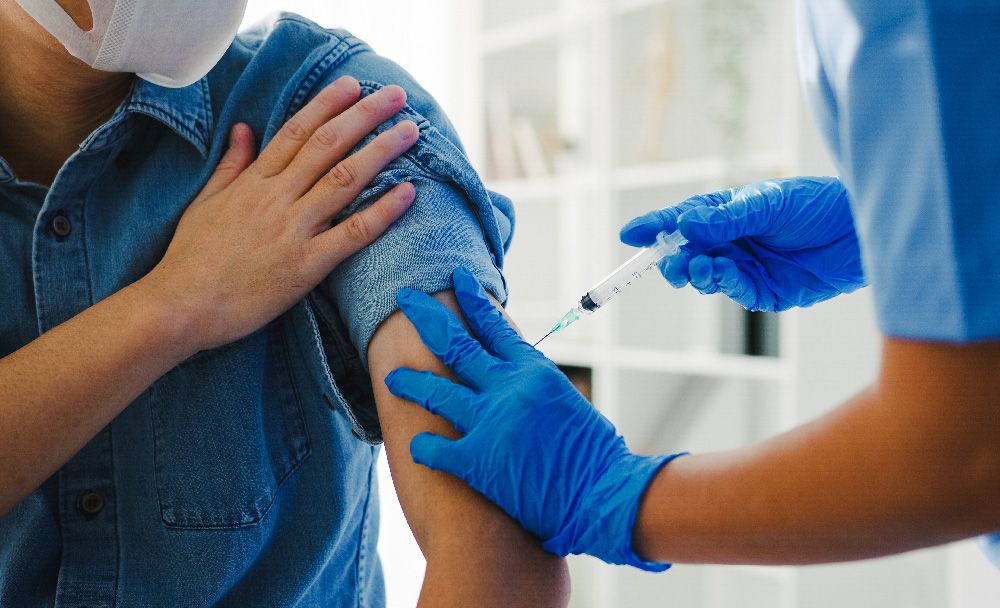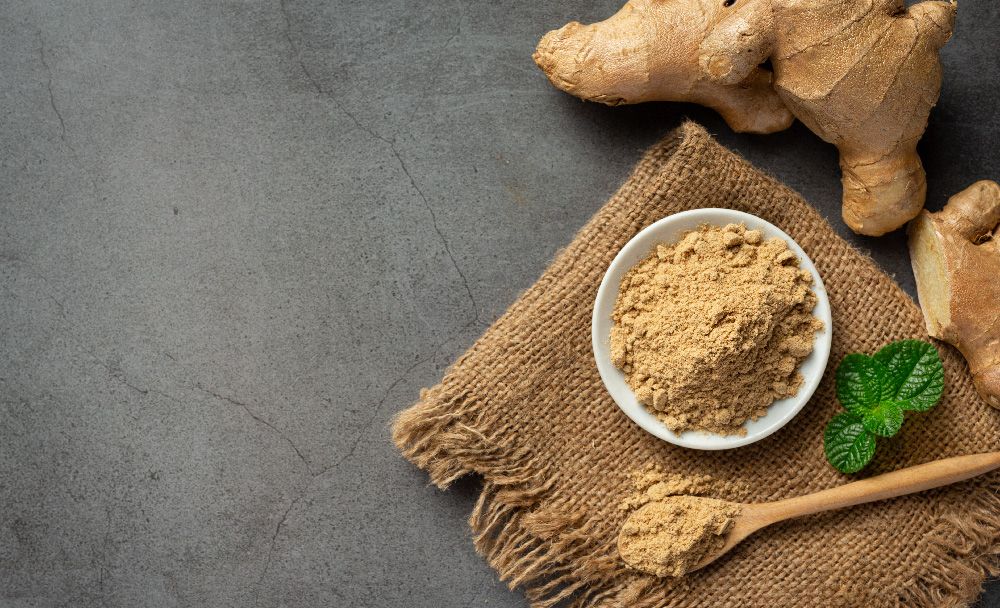This article is reviewed by an expert

Tuberculosis is a bacterial infection that spreads through the air when an infected person coughs, sneezes, or talks. It is a highly contagious disease that primarily affects the lungs but can also spread to other parts of the body. TB can be fatal if left untreated. [1] In this article, we will explore what tuberculosis is, its symptoms, causes, types, diagnosis, prevention, and treatment from an Ayurvedic perspective.
What is Tuberculosis?
Tuberculosis, commonly known as Tuberculosis, is a highly infectious disease caused by the bacterium Mycobacterium tuberculosis. It primarily affects the lungs but can also affect other parts of the body such as the kidneys, spine, and brain. Tuberculosis can be transmitted through the air when individuals with Tuberculosis cough, sneeze, or spit. Infection can occur when a person inhales even a small number of germs.
[1][2][3]
Symptoms of Tuberculosis
The symptoms of TB can vary depending on which part of the body is affected. However, the most common symptoms of tuberculosis include: [1]
- Coughing that lasts for more than three weeks
- Chest pain
- Coughing up blood or sputum
- Fatigue
- Fever and chills
- Loss of appetite and weight loss
- Night sweats
In some cases, TB can also affect other parts of the body, such as the kidneys, spine, and brain. Symptoms in these cases may include pain in the affected area, difficulty urinating, and confusion. [2][3]
Causes of Tuberculosis
Tuberculosis is caused by the bacterium Mycobacterium tuberculosis. The bacteria can spread from one person to another through the air when an infected person coughs, sneezes, or talks. It is more likely to spread in crowded and poorly ventilated areas.[1] [4]
Factors that increase the risk of contracting tuberculosis include:
-
- Weakened immune system: People with weakened immune systems, such as those living with HIV or undergoing chemotherapy, are more likely to contract TB. [4]
-
- Close contact with an infected person: People who live or work with someone who has TB are at a higher risk of contracting the disease. [1] [4]
-
- Age: People over the age of 65 are at a higher risk of contracting TB. [4]
Types of Tuberculosis
There are two types of tuberculosis: latent TB infection and active TB disease.
Latent TB Infection: In this type of TB, a person is infected with the TB bacteria but does not show any symptoms. However, the bacteria can remain in the body and become active at a later stage. [1] [2] [3] [4]
Active TB Disease: In this type of TB, a person shows symptoms of the disease and can spread the bacteria to others. [1][4]
Diagnosis of Tuberculosis
The diagnosis of tuberculosis involves a series of tests that can confirm whether a person has TB or not. These tests include:
Mantoux tuberculin skin test: This test involves injecting a small amount of protein under the skin of the forearm. If a person has been infected with TB bacteria, their body will react to the protein, causing a raised bump to appear on the skin. [5]
Chest X-ray: A chest X-ray can help detect any abnormalities in the lungs that may indicate TB. [5]
Sputum test: A sputum test involves collecting a sample of phlegm from the lungs and examining it under a microscope to look for the presence of TB bacteria.[5]
Blood test: A blood test can help detect the presence of TB bacteria in the body.[5]
Prevention of Tuberculosis
Prevention is key when it comes to tuberculosis. Here are some steps that can be taken to prevent the spread of TB:

Vaccination: The BCG vaccine is a vaccine that can help prevent TB. It is recommended for infants and children who are at a higher risk of contracting TB.[1] [4]

Good hygiene practices: Proper hygiene practices such as covering your mouth when coughing or sneezing, washing your hands frequently, and avoiding close contact with people who have TB can help prevent the spread of the disease.[1] [4]
Proper ventilation: Proper ventilation in living spaces and work areas can help prevent the spread of TB. [1] [4]
Early detection and treatment: Early detection and treatment of TB can help prevent the spread of the disease to others. [1] [4]
Treatment of Tuberculosis from an Ayurvedic Perspective
Ayurveda offers various natural remedies for the treatment of tuberculosis also referred to as Yakshma. The Ayurvedic approach to treating tuberculosis focuses on strengthening the immune system, detoxifying the body, and treating the underlying causes of the disease.
Here are some Ayurvedic remedies for the treatment of tuberculosis:
Diet: A diet rich in fresh fruits, vegetables, and whole grains can help boost the immune system and aid in the recovery of TB. Foods that are difficult to digest, such as fried and spicy foods, should be avoided. Foods that are high in protein, such as lentils, beans, and nuts, can also be beneficial.[6]

Herbal remedies: Certain herbs and a combination of certain products like Chayawanprash can help boost the immune system and aid in the recovery of TB. These include Turmeric, Ginger, Guduchi, and Ashwagandha.[7] [8]
Yoga and meditation: Yoga and meditation can help reduce stress and boost the immune system, aiding in the recovery of TB.[9]
Ayurvedic therapies: Ayurvedic therapies such as Panchakarma, which involves detoxifying the body, and Abhyanga, which involves the application of warm herbal oils to the body, can help in the recovery of TB. [10]
Consultation with an Ayurvedic practitioner: It is important to consult with an Ayurvedic practitioner for personalized treatment options.
In addition to Ayurvedic remedies, conventional medical treatment is also necessary for the treatment of TB. This includes a combination of antibiotics prescribed by a medical doctor.[1] [4]
FAQs
1. Is conventional medical treatment necessary for tuberculosis?
Yes, conventional medical treatment, including a combination of antibiotics prescribed by a medical doctor, is necessary for the treatment of tuberculosis.
2. How long does tuberculosis treatment take?
Tuberculosis treatment can take anywhere from 6 to 9 months, depending on the severity of the disease and the individual’s response to treatment.
3. What is drug-resistant tuberculosis, and how is it treated?
Drug-resistant tuberculosis is a type of tuberculosis that is resistant to one or more of the antibiotics commonly used to treat the disease. It is treated with a combination of different antibiotics over a longer period of time than conventional tuberculosis treatment.
4. What are the potential complications of tuberculosis?
Potential complications of tuberculosis include lung damage, chronic respiratory problems, meningitis, spinal cord damage, and kidney failure.
5. Are there any special precautions individuals with tuberculosis should take when interacting with others?
Individuals with tuberculosis should take precautions to prevent the spread of the disease to others, such as covering their mouths when coughing or sneezing, practising good hygiene, and avoiding close contact with others until they are no longer contagious.
Conclusion
Tuberculosis is a highly infectious disease that can be fatal if left untreated. It is important to recognize the symptoms of TB and seek medical attention promptly if you suspect you may have the disease. Ayurveda offers natural remedies that can aid in the recovery of TB by boosting the immune system, detoxifying the body, and treating the underlying causes of the disease. However, it is important to consult with an Ayurvedic practitioner for personalized treatment options and to seek conventional medical treatment as well. Prevention is key when it comes to TB, so it is important to practise good hygiene, ensure proper ventilation, and get vaccinated if recommended by a medical professional.
Disclaimer: This article talks about Tuberculosis in the context of modern medicine. Ayurvedic remedies mentioned above are only meant to be used in conjunction with conventional treatment subject to approval by a medical professional. Please consult a trained medical practitioner every time before initiating any treatment.
References:
- Tuberculosis (who.int)
- Tuberculosis of the central nervous system
- Tuberculosis and the Kidney : Journal of the American Society of Nephrology (lww.com)
- Tuberculosis – Symptoms and causes – Mayo Clinic
- Testing for tuberculosis – Australian Prescriber (nps.org.au)
- Ayurvedic remedies of tuberculosis (wjarr.com)
- Adjunct therapy of Ayurvedic medicine with anti tubercular drugs on the therapeutic management of pulmonary tuberculosis – PMC (nih.gov)
- Ayurvedic management of pulmonary tuberculosis: A systematic review – PMC (nih.gov)
- View of Benefits of Yoga in Respiratory Diseases (ijpbr.in)
- View of Management Of Paraparesis Developed After Spinal Tuberculosis Through Ayurveda- A Case Study (ijaprs.com)

























